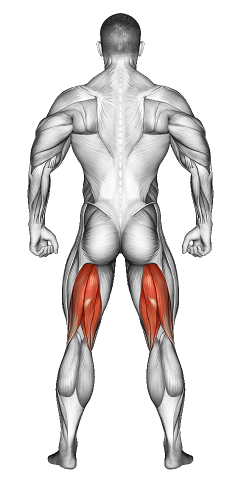Stability Ball Hamstring Curl: Video Tutorial & Exercise Guide

Written By: Claude Michael
Updated: Oct 13, 2024
| Workout | Stability Ball Hamstring Curl |
| Primary Muscle Group | Hamstrings |
| Equipment Required | Stability Ball |
| Force Type | Pull |
| Mechanics | Isolation |
| Exercise Type | Strength |
| Difficulty | Intermediate |
Stability Ball Hamstring Curl: Video Tutorial & Exercise Guide
- 1.Stability Ball Hamstring Curl: Muscle Groups
- -1.1Primary Muscle Group
- -1.2Secondary Muscle Group
- 2.Stability Ball Hamstring Curl: Step-by-Step Guide
- 3.Stability Ball Hamstring Curl: Overview
- 4.Stability Ball Hamstring Curl: Benefits
- 5.Stability Ball Hamstring Curl: Pro Tips & Advanced Techniques
- 6.Stability Ball Hamstring Curl: Progression Plan
- 7.Stability Ball Hamstring Curl: Frequently Asked Questions (FAQs)
Stability Ball Hamstring Curls: Step-by-Step Guide
- Step 1: Begin by lying on your back with your arms at your sides for stability. Place your heels on top of a stability ball, with your legs extended straight and your feet about hip-width apart.
- Step 2: Engage your core and glutes, then lift your hips off the floor, forming a straight line from your shoulders to your heels. Your body should be in a plank position.
- Step 3: Bend your knees and pull the ball towards your glutes by curling your legs. Focus on using your hamstrings to perform the movement.
- Step 4: Once the ball is close to your glutes, pause and squeeze your hamstrings.
- Step 5: Slowly extend your legs back out to the starting position, maintaining control of the ball.
- Step 6: Repeat for the desired number of reps, ensuring your hips stay lifted throughout the movement.
Stability Ball Hamstring Curl: Overview
The Stability Ball Hamstring Curl is a fantastic exercise for strengthening your hamstrings, glutes, and core. Using a stability ball increases the challenge by engaging your stabilizer muscles, making this movement more effective than traditional hamstring curls. It’s a great addition to your workout for improving lower body strength and balance.
Stability Ball Hamstring Curls: Benefits
This exercise targets the hamstrings and glutes while also engaging the core muscles for stability. It helps improve hip extension and knee flexion, key movements in athletic performance. Plus, the instability of the ball requires more balance and control, making it an excellent move for enhancing coordination.
Stability Ball Hamstring Curl: Pro Tips & Advanced Techniques
To get the most out of this exercise, make sure you’re engaging your core and glutes to keep your hips lifted. Avoid letting your hips sag or rushing through the movement. If you’re looking to increase the intensity, try performing the exercise one leg at a time or adding resistance by holding a light weight across your hips.
Stability Ball Hamstring Curl: Progression Plan
Beginner
Intermediate
Advanced
Stability Ball Hamstring Curl: Frequently Asked Questions (FAQs)
What muscles do Stability Ball Hamstring Curls target?
+This exercise primarily targets the hamstrings and glutes, while also engaging the core and lower back for stability.
How can I make Stability Ball Hamstring Curls more challenging?
+To increase the difficulty, try performing the movement one leg at a time, or add a light weight across your hips for more resistance.
Can beginners do Stability Ball Hamstring Curls?
+Yes! Beginners can start by practicing with both legs and focusing on keeping the hips lifted. As you build strength, you can increase the reps or try the single-leg variation.
How often should I include this exercise in my routine?
+You can include Stability Ball Hamstring Curls 1-2 times a week in your leg or lower body workout routine for balanced hamstring development.
What are some common mistakes to avoid?
+Avoid letting your hips drop or using momentum to pull the ball. Focus on slow, controlled movements to engage the correct muscles.
Share
Don’t Wish for It, Work for It – Join the FlexXP Newsletter Today!
Thank you for signing up for the FlexXP Newsletter!
This site is protected and the Google Privacy Policy and Terms of Service apply.
